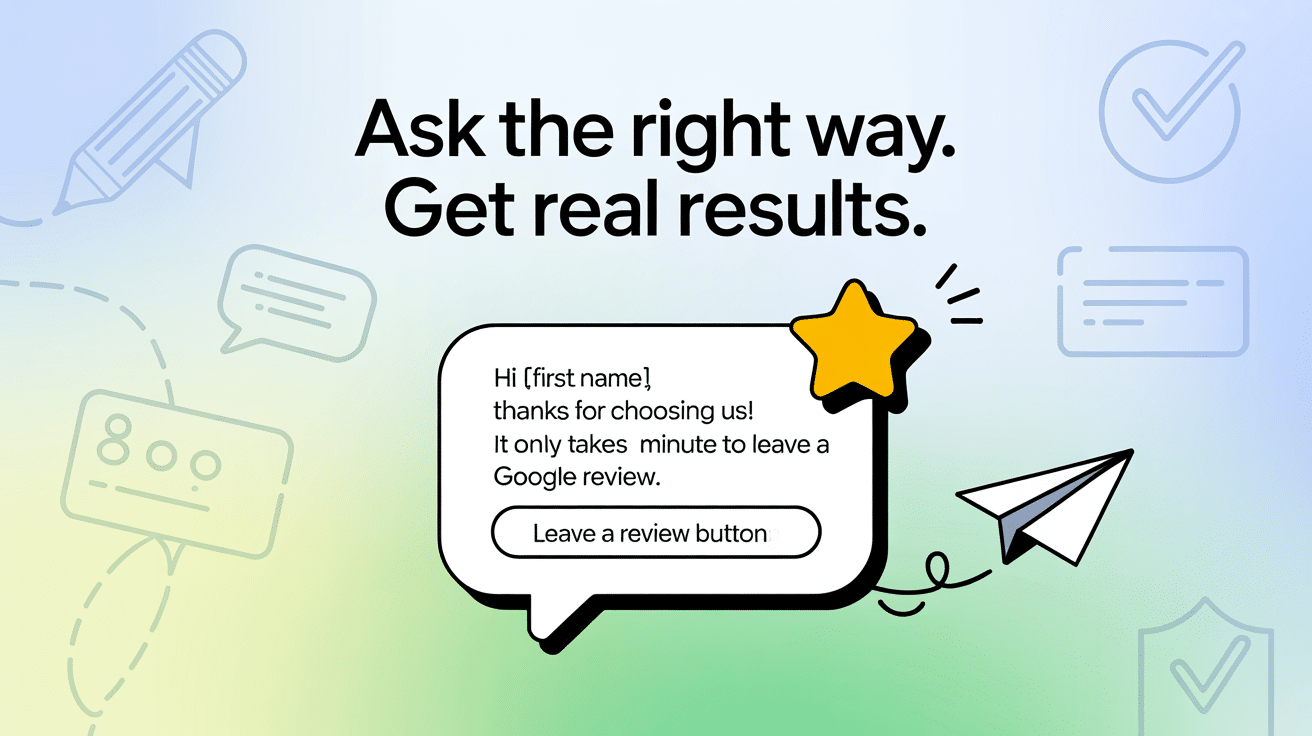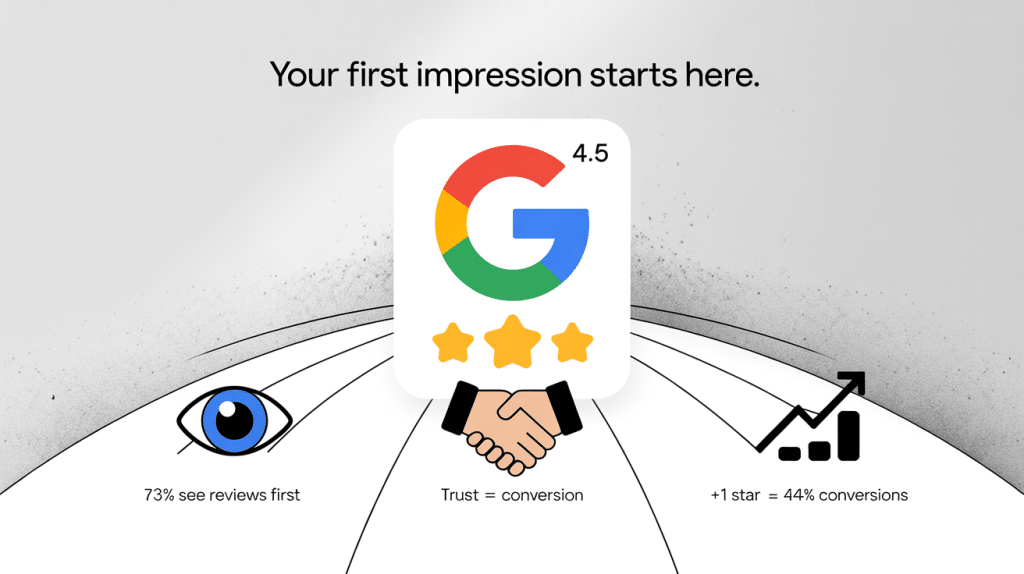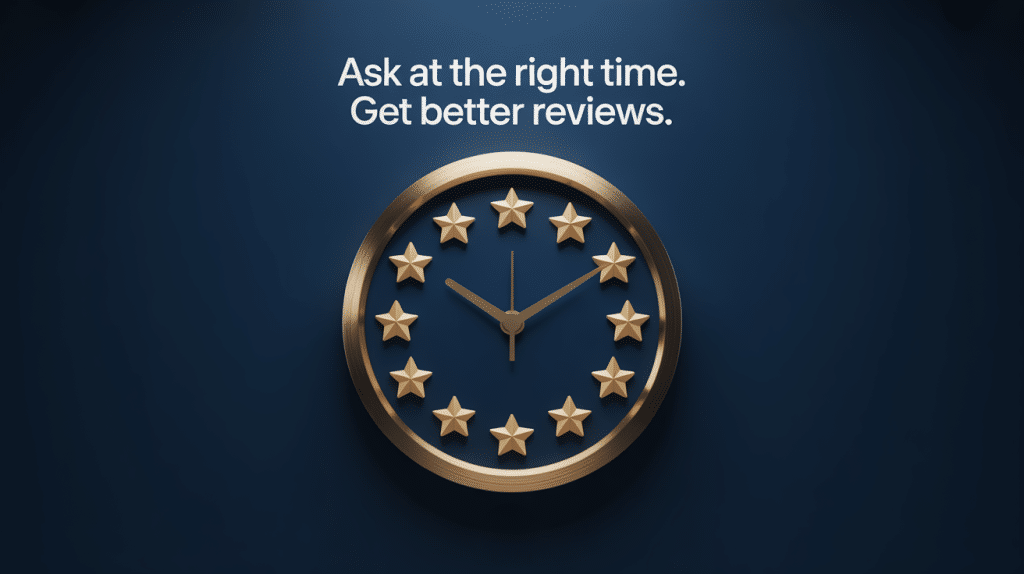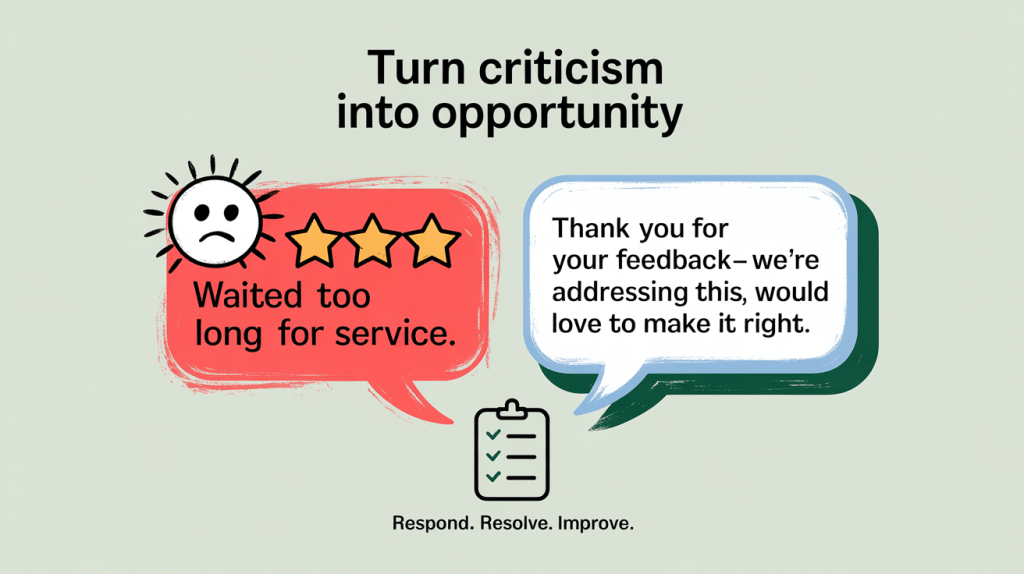Wrestle with the importance of Google and Yelp reviews in shaping your businesses success. Learn which is better of the two in this compelling deep-dive.


Your Google review strategy can make or break your online reputation. When you ask customers for feedback using the right templates and timing, you'll see response rates climb by up to 50%. Personalized messages that reference specific experiences show customers you value their opinion—and they'll respond in kind. But what separates an ignored request from one that generates a glowing five-star review? The answer lies in these proven approaches. Continue reading to learn the best ways on how to ask for Google reviews
Social proof is the cornerstone of modern business success. In today's digital marketplace, your Google reviews serve as the first impression for 73% of your potential customers.
They're not just nice to have—they're essential trust signals that directly impact your bottom line.

Consider this: 88% of consumers trust Google reviews as much as personal recommendations, and 83% read them before making purchasing decisions.
When your rating climbs by just one star, you'll see conversions jump by an impressive 44%.
Without a solid review profile (at least 20 reviews and a 4+ star average), you're losing business to competitors.
Only 13% of consumers would even consider a business with a 1-2 star rating.
The math is simple: more positive reviews equal more customers.
Every 10 new reviews drive conversion rates up by 2.8%, making review generation a must-have element of your growth strategy. With Google Reviews controlling over 83% of total online reviews, focusing your efforts here delivers the highest return on investment.
Actively responding to reviews, both positive and negative, demonstrates your customer satisfaction commitment and encourages more valuable feedback from your audience.
Requesting reviews at precisely the right moment can mean the difference between abundant feedback and crickets chirping in your inbox. Your timing strategy should align with your customers' emotional high points.

Wait 1-2 days after delivery confirmation for physical products—this gives customers time to form opinions without forgetting their experience. For services, strike while satisfaction is fresh by sending requests within 24 hours of completion.
Morning requests (9-11 AM) on Tuesday through Thursday typically generate stronger response rates—about 5-10% higher than other times. Avoid weekends when digital engagement drops, but don't overlook Friday requests when customers may have weekend downtime.
Industry timing varies considerably: request food reviews after one day, electronics feedback after 3-7 days, and skincare testimonials after 2-3 weeks. Implementing automation tools can significantly streamline your review request process while ensuring consistent timing.
For subscription services, wait until after the second renewal to gauge genuine satisfaction. Consider utilizing review plates with QR codes in physical locations to make the review submission process frictionless for customers at their moment of highest satisfaction.
Three powerful words can transform your SMS review requests from ignored messages into customer engagement goldmines: personalization, brevity, and timing.
When you craft messages that include customers' names, keep them under 160 characters, and send them right after a positive interaction, you'll see your conversion rates soar.
Your SMS templates should feel like a friendly message from someone who genuinely values their opinion, not an automated blast from a faceless business. Expressing gratitude for feedback received encourages customers to leave reviews in the future. Studies show that simplified processes significantly increase the likelihood of customers submitting reviews by removing friction points.
When it comes to generating Google reviews, SMS stands out as one of the most powerful and immediate channels available. With open rates consistently above 95%, SMS review requests almost guarantee that your message will be seen and acted upon quickly. But success isn’t just about sending texts—it’s about sending the right text at the right time.

Start with personalization. Address your customer by name and reference their recent experience (“Hi Sarah, thanks for choosing us yesterday!”). Keep your message brief and friendly—under 160 characters works best—and make your ask crystal clear: include a direct, shortened link to your Google review page so customers can respond in just one tap.
Timing is everything. Send your SMS within a few hours to one day after the customer’s experience, when their impressions are still fresh. Avoid sending texts too early in the morning or late at night; late mornings and early afternoons tend to see the highest response rates.
Be transparent about why you’re reaching out. Let customers know that their feedback helps your business grow and improves the experience for others. A genuine thank-you goes a long way toward making your request feel authentic rather than transactional.
Finally, always respect customer preferences and make it easy to opt out of future texts. Not only is this legally required, but it also builds long-term trust and keeps your reputation intact.
By refining your SMS review request strategy with these best practices, you’ll see higher response rates, more positive feedback, and stronger customer relationships—helping your business stand out where it matters most.
If you’re ready to take your Google review generation to the next level, Reviewly.ai is the all-in-one platform designed to do the heavy lifting for you—so you can focus on what matters most: building customer relationships and growing your business.
Unlike other solutions, Reviewly.ai specializes in SMS-based review outreach, ensuring your requests are delivered instantly and actually seen by your customers. With over 95% open rates, SMS is the most reliable channel for prompting quick, authentic feedback at exactly the right moment. Reviewly.ai lets you automate SMS review requests based on key customer actions—like completed purchases or appointments—so you’re always reaching out when the experience is fresh and satisfaction is highest.
Personalization is built right in. You can customize every message with the customer’s name and details about their visit, making each request feel like a genuine thank you, not a generic blast. Plus, shortened links and mobile-optimized landing pages mean your customers can leave a review with just one tap—no friction, no hassle.
Reviewly.ai also provides real-time notifications when new reviews are posted, helping you respond quickly and show customers you truly value their input. Smart analytics let you track review trends, response rates, and customer sentiment over time, so you’re always improving your approach.
Personalized requests for Google reviews transform casual feedback solicitation into meaningful customer interactions.
By leveraging customer data, you'll see up to 50% higher response rates when your requests feel tailored specifically to each recipient. Real-time personalization and behavioral data aren't just marketing buzzwords—they're your pathway to building lasting connections with customers who want to feel valued by your business. Further research shows that personalized content can enhance customer engagement by up to 55% higher compared to generic review requests. Implementing a proactive engagement strategy with personalized touchpoints can significantly strengthen your online reputation management efforts.
Here are three powerful personalization techniques to implement today:
When you make customers feel recognized, they're 60% more likely to leave that valuable Google review you're seeking.
When negative feedback appears on your Google profile, your response strategy can make the difference between losing potential customers and turning critics into advocates.
With 94% of consumers avoiding businesses after reading just one bad review, you can't afford to ignore complaints.

Respond within 24-48 hours to show you value customer input—especially since 53% of customers expect replies within a week, yet 63% never receive one.
Start by acknowledging the issue and offering a sincere apology without becoming defensive.
Create templates to maintain consistency while personalizing each response. Move complex issues to private channels while publicly demonstrating your commitment to resolution.
Despite only 24% of businesses consistently responding to negative reviews, doing so effectively can dramatically improve your reputation and customer trust.
Use negative feedback as a learning opportunity by tracking patterns and implementing changes.
Then, encourage satisfied customers to leave positive reviews to balance your profile.
Remember that customer feedback offers valuable insights for business growth and service enhancement beyond just reputation management.
Modern review management demands automation, especially since manual processes can't scale with growing businesses.
With the right tools, you'll capture more feedback while saving countless hours. Today's review platforms integrate directly with your CRM systems, triggering perfectly-timed requests after appointments or purchases when customer satisfaction is at its peak. Leveraging SMS for review requests is particularly effective with its 98% open rate, making it an ideal channel for immediate customer engagement.
These technologies transform review collection from a time-consuming chore into a streamlined process that strengthens your online reputation automatically. Software that centralizes feedback from multiple platforms ensures you never miss valuable customer sentiment that could improve your business operations.
Successful review generation strategies require careful measurement against clearly defined key performance indicators (KPIs). You'll want to track metrics that connect directly to both customer sentiment and your bottom line. Remember that 92.4% of consumers rely on online reviews when making purchasing decisions. Effective management of these reviews can significantly improve search rankings and visibility for your business.
| Customer-Driven Metrics | Business Impact Metrics |
|---|---|
| Review count growth | New customer acquisition |
| Review velocity | Conversion rate from viewers |
| Response rate | Local search rankings |
| Sentiment analysis | Website visits via GBP |
| Positive-to-negative ratio | Customer lifetime value |
Don't just count stars—analyze the content within reviews for keywords that reveal what your customers value most. Compare your performance against competitors to identify opportunities for improvement. When you benchmark your review metrics against industry standards, you'll gain clarity on where you stand in your market. Remember, the goal isn't simply collecting reviews—it's using that feedback to strengthen customer relationships and drive measurable business growth.
Your Google review strategy can be the wind beneath your business's wings. By implementing these proven templates, timing your requests perfectly, and embracing all feedback—even when customers share less-than-glowing thoughts—you'll build a reputation that speaks volumes. Start personalizing your outreach today, and watch as your digital presence blossoms into a garden of customer trust and conversion growth.

Wrestle with the importance of Google and Yelp reviews in shaping your businesses success. Learn which is better of the two in this compelling deep-dive.
Find out how leveraging data digital transformation and client engagement can skyrocket your marketing agency's growth. Don't miss out on these strategies!
Review Generation is about Keeping customers talking about your business. Building trust, but most companies fail to capture these powerful testimonials.
Embarking on the journey of managing Google Reviews can seem daunting for a beginner in 2024—but fear not! In this beginner’s guide to Google Reviews, you’ll be armed with everything you need to claim your Google Business Profile, gather impactful reviews, and navigate customer feedback like a pro. Whether it’s your first step into the […]
In today's digital landscape, having a strong online presence is crucial for businesses of all sizes. One of the most powerful tools at your disposal is the Google Business Profile (GBP). This comprehensive Google Business Profile setup guide will walk you through setting up, optimizing, and maintaining your profile to ensure your business stands out […]
Facing FTC's new rules on consumer reviews and AI-generated content? Discover how they impact your business and strategies for compliance.